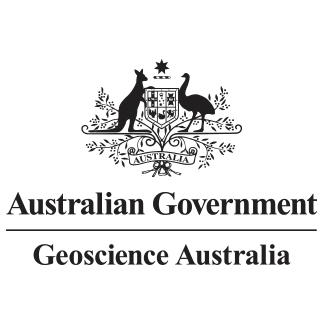Full description
In June 2017, AAM completed field and aerial surveys over ~8,000 sqkm to generate orthoimagery and high definition level 1 classified LiDAR data to GA’s specifications. Under GA Deed CMC G3298A Contract D2017-43573 - Kimberley East. LiDAR and Imagery was captured over the site in separate flights between the 9th and 17th June 2017, a small gap was captured 9th July, the LiDAR and imagery have been controlled by 30 new control points This data supplied in this delivery is the Level 1 Classified las v1.4 dataset in 2km tiles. The height datum is Ellipsoidal.Lineage
Maintenance and Update Frequency: notPlanned
Statement: All LiDAR captured with an Optech Galaxy LiDAR Unit Between 09-June-2017 and 15-June-2017 Gap captured with and Optech 3100 LiDAR Unit 09-July-2017 NEDF Metadata Acquisition Start Date: Friday, 9 June 2017 Acquisition End Date: Thursday, 15 June 2017 Sensor: LiDAR Device Name: Optech Galaxy Flying Height (AGL): 1495 INS/IMU Used: Applanix AV510 Number of Runs: 160 Number of Cross Runs: 1 Swath Width: 1000 Flight Direction: E Swath (side) Overlap: UNK Horizontal Datum: GDA94 Vertical Datum: GRS80 Ellipsoid Map Projection: MGA52 Description of Aerotriangulation Process Used: - Description of Rectification Process Used: - Spatial Accuracy Horizontal: 0.8 Spatial Accuracy Vertical: 0.24 Average Point Spacing (per/sqm): 0.5 Laser Return Types: 4 pulses Data Thinning: - Laser Footprint Size: 0.37 Calibration certification (Manufacturer/Cert. Company): - Limitations of the Data: Data is only classified to Class 1 specifications Surface Type: LiDAR Product Type: Mass Points Classification Type: C1 Grid Resolution: 1000 Distribution Format: LAS Processing/Derivation Lineage: Due to the size of the area the collection of LiDAR and Imagery was from separate flights, The LiDAR was controlled using 30 control points and base stations were maned during each of the flights. All of the data has been supplied in MGA Zone 52. The IMU and post processed airborne GPS logs were used to generate the LiDAR point cloud. Raw LiDAR strips were levelled to establish internal consistency, once the flight line matching had been completed the data was imported into 2km x 2km tiles in LAS v1.4 format. Automatic classification was performed in TerraScan to reach C1 classification. Data has been clipped to the client’s boundary. WMS: -? Additional Products: Orthometric LAS Points: The Orthometric Point Cloud has been converted from the supplied Ellipsoidal Point Cloud. Orthometric 1m Digital Elevation Model: The Orthometric classified Lidar Point Cloud was used to create the 1 meter Digital Elevation Model(DEM) from points classified as Ground (2) and Water (9). Orthometric 5m Digital Elevation Model: The Orthometric 1m Digital Elevation Model has been used to aggregate the Orthometric 5m Digital Elevation Model. Ellipsoidal 1m Digital Elevation Model: The Orthometric 1m Digital Elevation Model has been used to create the Ellipsoidal 1m Digital Elevation Model. Orthometric 1m Digital Surface Model: The Orthometric classified Lidar Point Cloud was used to create the 1 meter Digital Surface Model from all points except those classified Low Noise (7) and High Noise (18). 2m Canopy Height Model: The Orthometric classified Lidar Point Cloud was used to create the 1.37 meter Canopy Height Model from points classified Medium Vegetation (4) and High Vegetation (5). Areas of NoData where set to 0. 10m Fractional Coverage Model: The Orthometric classified Lidar Point Cloud was used to create the 10 meter Fractional Coverage Model from points classified Medium Vegetation (4) and High Vegetation (5) and that were 2.0 metres above the ground surface. The resulting grid was converted from floating values ranging from 0 to 1 to integer values ranging from 0 to 100. Areas of NoData where set to 0. 2m Vegetation Model: The Orthometric classified Lidar Point Cloud was used to create the 2 meter Vegetation Height Model from points classified Low Vegetation (3), Medium Vegetation (4) and High Vegetation (5). Areas of NoData where set to 0. 10m Vegetation Coverage Model: The Orthometric classified Lidar Point Cloud was used to create a 10 meter Vegetation Coverage Model from points classified Low Vegetation (3), Medium Vegetation (4) and High Vegetation (5) and a Vegetation Coverage Model from points classified Medium Vegetation (4) and High Vegetation (5). The resulting grid was converted from floating values ranging from 0 to 1 to integer values ranging from 0 to 100. Areas of NoData where set to 0. 0.5m Intensity Grids: The Orthometric classified Lidar Point Cloud was used to create 2 0.5m Intensity grids using points identified as First Returns for the first grid and points identified as Last Returns for the second grid. Limitations: The LiDAR point clouds have been classified using a level 1 automated classification level, with minimal manual correction. This may result in some points being misclassified. The Digital Elevation and Digital Surface models are interpolated data models, detailing an approximation of the elevation.
Issued: 09 10 2019
Data time period: 2017-06-09 to 2017-06-15
text: westlimit=128.3459; southlimit=-15.9554; eastlimit=129.4112; northlimit=-14.8876
Subjects
EARTH SCIENCES |
EFTF |
Exploring For The Future |
HVC_144648 |
Published_External |
geoscientificInformation |
User Contributed Tags
Login to tag this record with meaningful keywords to make it easier to discover
Other Information
Link to Elevation Information System
Identifiers
- Local : C7FDA017-80B2-4F98-8147-4D3E4DF595A2
- Local : pid.geoscience.gov.au/dataset/ga/129985
- global : bea01a3e-76f6-4e3f-9bfc-5f07d912d8e5


